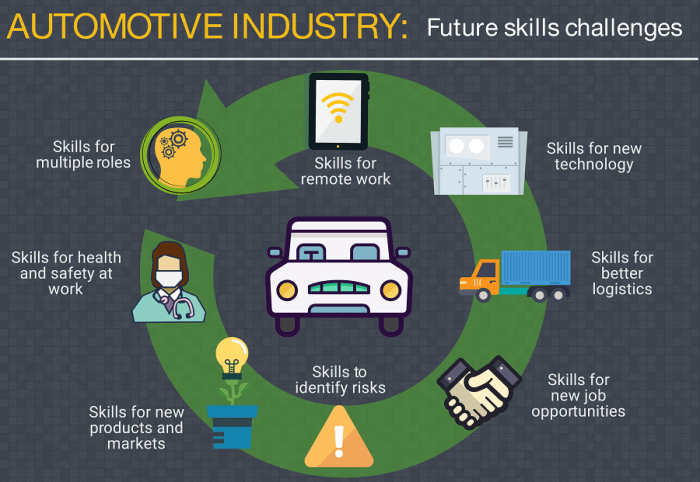The Role of Diversity and Inclusion in the Automotive Workforce

The automotive industry, traditionally a male-dominated field, is increasingly recognizing the critical importance of diversity and inclusion (D&I) in driving innovation, enhancing productivity, and fostering a more equitable workplace. While progress has been made, significant challenges remain in achieving true representation across all levels and functions within automotive companies globally.The Current State of Diversity and Inclusion in the Automotive IndustryThe automotive industry, while making strides, still lags behind many other sectors in terms of diversity and inclusion.
Women remain underrepresented in leadership positions and technical roles, particularly in engineering and manufacturing. Similarly, racial and ethnic minorities are often underrepresented, creating a workforce that doesn’t fully reflect the diverse customer base it serves. This lack of diversity can lead to a homogenization of ideas and perspectives, hindering innovation and potentially impacting product development and marketing strategies.
While some companies are actively pursuing D&I initiatives, the overall progress is uneven, with substantial disparities existing between organizations and even within departments of the same company.
Challenges in Promoting Diversity and Inclusion
Several significant hurdles impede the progress of diversity and inclusion within the automotive sector. These include deeply ingrained biases and stereotypes, a lack of diverse talent pipelines, insufficient mentorship and sponsorship opportunities for underrepresented groups, and a lack of accountability for achieving D&I goals. Furthermore, a lack of flexible work arrangements and family-friendly policies can disproportionately affect women and caregivers, limiting their career progression.
The industry also faces challenges in attracting and retaining diverse talent from under-represented communities, often due to a perceived lack of inclusivity within the corporate culture.
Opportunities for Promoting Diversity and Inclusion
Despite the challenges, there are substantial opportunities to foster a more diverse and inclusive automotive workforce. Leveraging technology to improve recruitment processes and reduce bias, implementing targeted mentorship and sponsorship programs, creating employee resource groups (ERGs) to provide support and networking opportunities, and fostering a culture of psychological safety where employees feel comfortable expressing their ideas and concerns are all crucial steps.
Furthermore, collaborating with educational institutions and community organizations to cultivate a diverse talent pipeline is essential for long-term success. A commitment to transparency and accountability in tracking D&I metrics can also drive significant progress.
Best Practices for Creating a More Diverse and Inclusive Workplace
Implementing effective D&I strategies requires a multi-pronged approach. This includes setting ambitious yet achievable diversity goals, coupled with regular progress monitoring and reporting. Companies should invest in unconscious bias training for all employees to help identify and mitigate inherent biases in decision-making processes. Implementing inclusive leadership training programs can equip managers with the skills to create equitable and supportive work environments.
Furthermore, fostering a culture of open communication and feedback is critical, allowing employees to voice their concerns and contribute to creating a more inclusive workplace. Companies should also actively seek out and engage with diverse suppliers and partners to extend their commitment to D&I beyond their internal workforce.
Visual Representation of Diversity and Inclusion’s Impact on Innovation and Productivity
Imagine a vibrant mosaic, where each tile represents a unique individual with their own background, skills, and perspective. This mosaic, representing a diverse workforce, is far more intricate and resilient than a single-colored tile. The varied colors and textures represent the diverse skillsets and experiences, while the intricate pattern demonstrates the synergy created through collaboration. The mosaic’s strength and beauty, representing the increased innovation and productivity achieved through D&I, are far greater than the sum of its individual parts.
A single-colored tile, representing a homogenous workforce, lacks the richness and complexity of the mosaic, ultimately limiting its potential.